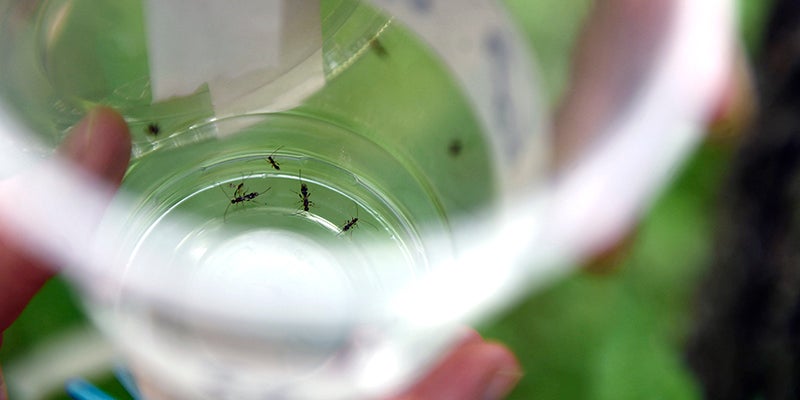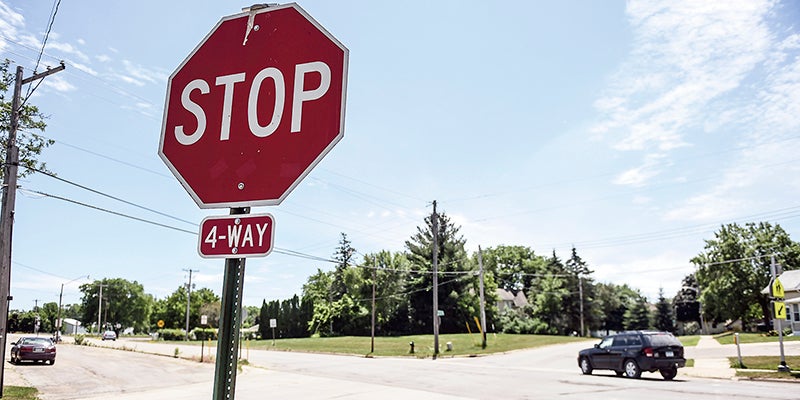Nature vs. Nature: Nature Center launches offensive to combat EAB
Published 5:56 pm Thursday, June 22, 2023
|
Getting your Trinity Audio player ready...
|
There’s no doubt that the war against the Emerald Ash Borer in Mower County will be a war of attrition, but on Thursday an offensive was launched in the Jay C. Hormel Nature Center that has people hopeful for the future.
Around 600 parasitoid wasps were released on ash trees at three points in the Nature Center that will carry the fight to EAB already infesting ash trees in Austin.
The wasps will attack theEAB while hopefully growing their own numbers to help stabilize younger ash trees for the future.
“The goal is to have these in the environment; they will reproduce and consume Emerald Ash Borer,” said Minnesota Department of Agriculture EAB biocontrol coordinator Chris Mallet. “Their populations will grow and reduce the population of EAB.”
Thursday’s work is part of a partnership between the Nature Center and the Department of Ag to create the first biocontrol site in Mower County.
The wasps released, no bigger than an ant, come in three different species and will attack the EAB in different ways.
READ MORE: Front line defense
“Two consume the larvae, one consumes the egg,” Mallet said, explaining that the predatory behavior completes the life cycle of the wasps.
The wasps have no stinger, are harmless to humans and have shown across the nation to reduce EAB populations, though, they won’t eradicate EAB completely from an area.
The effort also won’t save larger trees, but rather holds a hope for the future that younger trees can be spared.
“This is long term,” Mallet said. “This isn’t going to save your nice big, mature ash tree. This is a hope for 10 years, 20 years down the road.”
Parks, Recreation and Forestry Department crews in Austin have already begun the work of cutting down an estimated 2,400 ash trees in the community in an effort to take a defensive stance against the invasive species.
That number will cut a significant hole in Austin’s trees, many of which are located in the Nature Center itself. And while trees have yet to be cut down in the Nature Center, the end is inevitable as Director Luke Reese indicated that signs of infestation are already visible.
“What it does is give us time and more options for more treatment where we can combine it with other things,” Reese said. “That’s the big part. For us at the Nature Center, we have a lot of ash trees in our forest. We have been, over the last few years, trying to underplant our ash trees with other species so we have the next generation of forest.”
“This in particular buys us time,” he emphasized.
That plan works with the Department of Ag’s goal of bringing EAB down below tree-killing levels.
Mallet said that Mower’s biocontrol site at the Nature Center brings the total number in the state to 53.
Even though the program has been active for over 10 years now, he said that overall it’s still in the research phase. Still, there are optimistic signs coming from the program.
Research in Michigan has shown the wasps have been able to kill anywhere between 20-80% of EAB in trees. Mallet explained that the wasps have also made it past two major hurdles — finding the EAB in the trees and surviving the harsh winters.
The wasps will be distributed seven more times this summer with another eight distributions next year. In the third year there will be no releases and in year four there will be recovery work to see how the wasps have progressed.
Despite the long wait, Reese said that it’s exciting to be a part of such a program in the state.
“It’s good to be able to use all of the tools in the toolbox and this is a great tool,” Reese said. “It’s another example why the Hormel Nature Center is a great asset for the community of Austin.”
“The idea that we have an invasive pest and we bring in another insect to try and control it — it’s using Mother Nature to fix a problem in Mother Nature,” he added.










